Croatia is home to some of the best places to visit in Croatia, making it a top choice for travelers seeking breathtaking landscapes, rich history, and vibrant culture. In this guide, we’ll explore the 20 best places to visit in Croatia, showcasing everything from stunning national parks to charming coastal towns, ensuring you have an unforgettable experience.
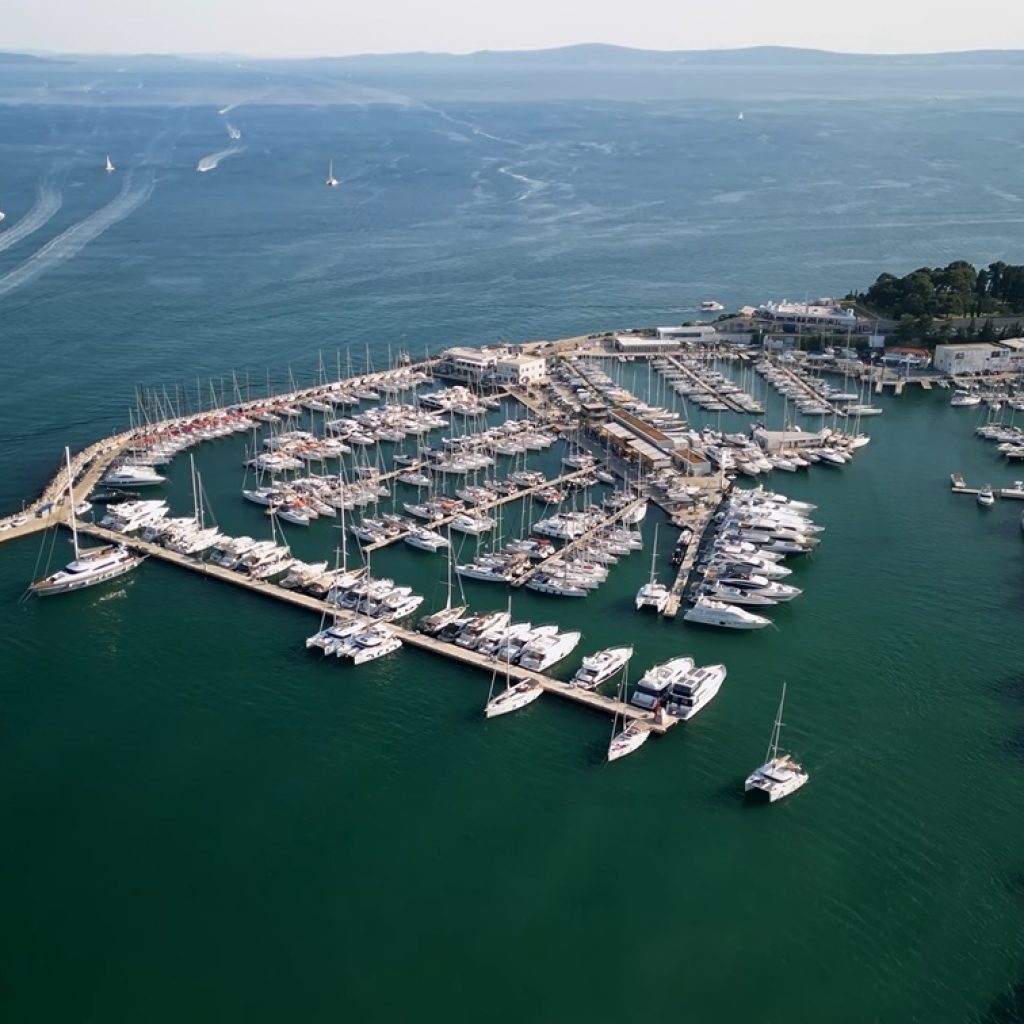
Why Croatia? Croatia, a gem of southeastern Europe, boasts over 1,200 islands, stunning coastline, ancient towns, and natural beauty that captivates travelers from around the globe. Nestled on the shores of the Adriatic Sea, Croatia’s tourism has grown rapidly since the early 2000s, attracting visitors with its rich history, delicious cuisine, and crystal-clear waters. From medieval walled cities like Dubrovnik to hidden island getaways, Croatia offers diverse experiences.
Geography and Climate Croatia’s geography is as diverse as its culture. The country is divided into several distinct regions, each offering something different for travelers:
- Dalmatia: Known for its rugged coastline, islands, and historic towns.
- Istria: Famous for its Italian influence, vineyards, and charming seaside towns.
- Central Croatia and the Inland: Rolling hills, forests, and picturesque villages.
- Slavonia: The agricultural heartland of Croatia, rich in wine and traditions.
Croatia enjoys a Mediterranean climate along its coast, which is perfect for summer travel. Inland, the weather is more continental, with colder winters and hot summers.
Croatia’s Rich Historical and Cultural Heritage
Brief Historical Overview Croatia’s history is a tapestry of influences from ancient civilizations to modern European developments. The country has been home to Illyrians, Greeks, Romans, Venetians, and Austro-Hungarians, each leaving their mark on its cities and culture.
- Roman Legacy: The Romans ruled Croatia for centuries, and their influence is still visible in the ruins and monuments scattered throughout the country, such as the magnificent Pula Arena and Diocletian’s Palace in Split.
- Venetian Influence: Along the Dalmatian coast, particularly in cities like Dubrovnik and Zadar, Venetian rule left behind striking architecture, with elegant bell towers, palaces, and fortifications.
- Ottoman and Austro-Hungarian Era: Inland areas bear the imprint of the Ottoman Empire’s control, as seen in places like Osijek and Slavonia. Later, Croatia was part of the Austro-Hungarian Empire, which added baroque and neoclassical influences to cities like Zagreb and Varaždin.
Croatian Traditions Croatia is home to unique cultural traditions, such as:
- Moreška Sword Dance on Korčula Island: A centuries-old battle dance between Moors and Christians.
- Festivals: From the Dubrovnik Summer Festival, which celebrates the arts, to local harvest festivals in rural areas, Croatia’s calendar is filled with cultural events.
- Gastronomy: Croatia’s cuisine is a reflection of its varied history. Along the coast, seafood is a staple, while inland areas boast hearty dishes like Peka (slow-cooked meat) and strukli (pastry filled with cheese).
The Dalmatian Coast: A Paradise for Beach Lovers and History Buffs
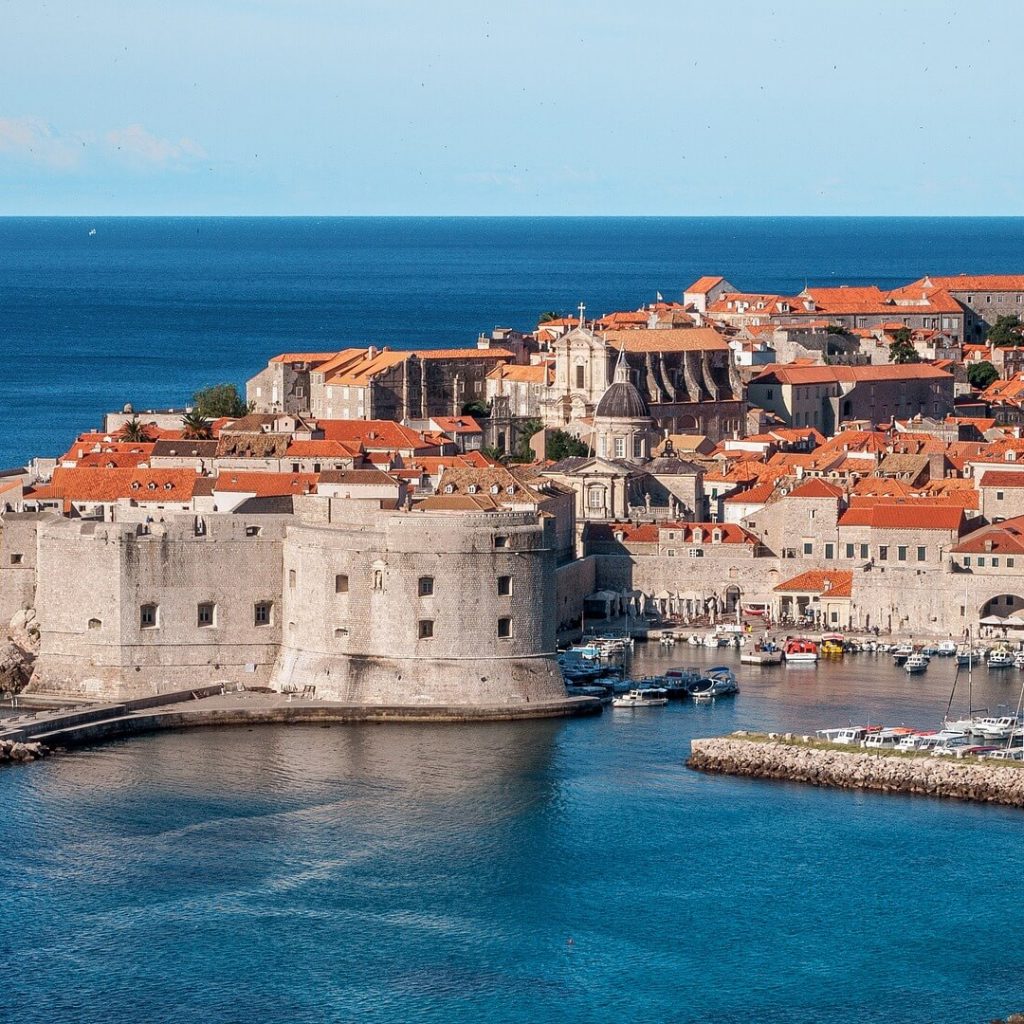
1. Dubrovnik: The Pearl of the Adriatic
Dubrovnik is Croatia’s most famous city and a UNESCO World Heritage site. Its stunning city walls, picturesque streets, and medieval architecture make it one of the most visited destinations in the world. Dubrovnik’s ancient town and its connection to “Game of Thrones” have boosted its fame globally, but its charm goes far beyond TV fame.
Top Attractions in Dubrovnik:
- City Walls: The fully walkable ancient city walls are a must-see, offering panoramic views of the old town, the Adriatic Sea, and the surrounding islands.
- Lovrijenac Fortress: A dramatic cliff-top fortress that has protected Dubrovnik for centuries, now a popular spot for performances during the Dubrovnik Summer Festival.
- Stradun (Placa): The main thoroughfare of Dubrovnik, lined with shops, cafes, and historic buildings, perfect for an evening stroll.
- Lokrum Island: A lush, peaceful retreat just a short boat ride from Dubrovnik, home to peacocks, botanical gardens, and a monastery.
Tips for Visiting Dubrovnik:
- Best Time to Visit: Avoid the summer months (July-August) for a less crowded experience. Spring and fall offer pleasant weather without the overwhelming tourist crowds.
- Where to Stay: Dubrovnik has a range of accommodations, from luxury hotels inside the old town to beachfront resorts on the outskirts.
- Day Trips: Take a day trip to the Elafiti Islands or explore Cavtat, a quieter town just south of Dubrovnik.
2. Split: A Blend of Ancient and Modern
Split, the largest city in Dalmatia, is a perfect combination of ancient history and modern living. The city is built around the Diocletian’s Palace, a UNESCO site and one of the best-preserved Roman ruins in the world.
Things to Do in Split:
- Diocletian’s Palace: This sprawling ancient palace is now a lively part of Split, with homes, shops, and cafes integrated into its Roman walls.
- Cathedral of St. Domnius: Originally the mausoleum of Diocletian, this cathedral is one of the oldest in the world.
- Marjan Hill: A popular spot for locals and tourists alike, Marjan Hill offers hiking trails and spectacular views over Split and the surrounding islands.
- Riva Promenade: The bustling waterfront promenade is lined with cafes and restaurants, perfect for people-watching.
Nearby Attractions:
- Trogir: Just a 30-minute drive from Split, Trogir is a tiny UNESCO-protected town with stunning medieval architecture.
- Klis Fortress: A short drive from Split, Klis Fortress offers panoramic views of Split and the coast. It’s also famous for being a filming location in “Game of Thrones.”
- Krka National Park: A day trip from Split will take you to Krka, where you can explore waterfalls and swim in crystal-clear pools.
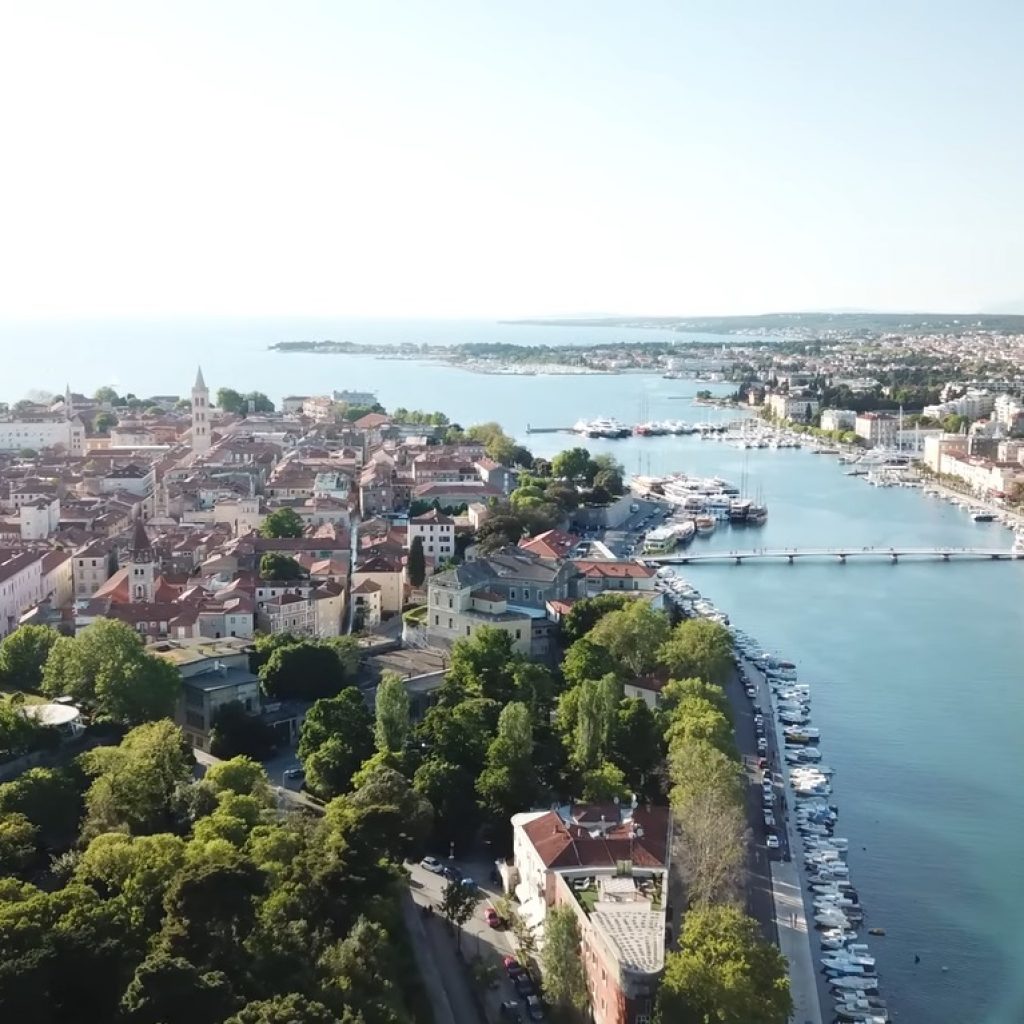
3. Zadar: Where History Meets Modern Art
Zadar is a city where ancient history and modern innovation coexist beautifully. Its Roman ruins, medieval churches, and cutting-edge art installations make Zadar a unique destination in Croatia.
Must-See Attractions in Zadar:
- The Sea Organ: An architectural sound art object that uses the movement of the sea to create music, a truly unique experience.
- The Greeting to the Sun: A solar-powered light installation by the same artist who created the Sea Organ. At night, it lights up with vibrant colors, reflecting the day’s solar energy.
- St. Donatus Church: A remarkable round pre-Romanesque church from the 9th century, Zadar’s most famous landmark.
- Roman Forum: The ruins of a Roman Forum that dates back to the 1st century BC.
Day Trips from Zadar:
- Kornati National Park: A stunning archipelago of islands, perfect for sailing, snorkeling, and diving.
- Paklenica National Park: Known for its dramatic canyons and hiking trails, it’s a paradise for nature lovers and climbers.
- Nin: A small town known for its salt pans and ancient churches, only a short drive from Zadar.
4. Hvar Island: Party Central Meets Lavender Fields
Hvar is one of the most popular islands in Croatia, famous for its nightlife, beautiful beaches, and lavender fields. It’s a hotspot for yacht parties, but also offers plenty of history and culture for those looking for a more relaxed experience.
Things to Do in Hvar:
- Hvar Town: Explore the lively town center, with its beautiful architecture, restaurants, and nightlife.
- Fortica Fortress: Perched above Hvar Town, this fortress offers stunning views over the harbor and surrounding islands.
- Stari Grad: One of the oldest towns in Croatia, it’s a peaceful alternative to Hvar Town, known for its vineyards and olive groves.
- Lavender Fields: Hvar is known for its lavender, which blooms in June and July. You can visit farms and buy locally-made lavender products.
Nearby Adventures:
- Pakleni Islands: A chain of small islands just off the coast of Hvar, perfect for a day of beach hopping or boating.
- Dubovica Beach: A secluded pebble beach with crystal-clear waters, just a short drive from Hvar Town.
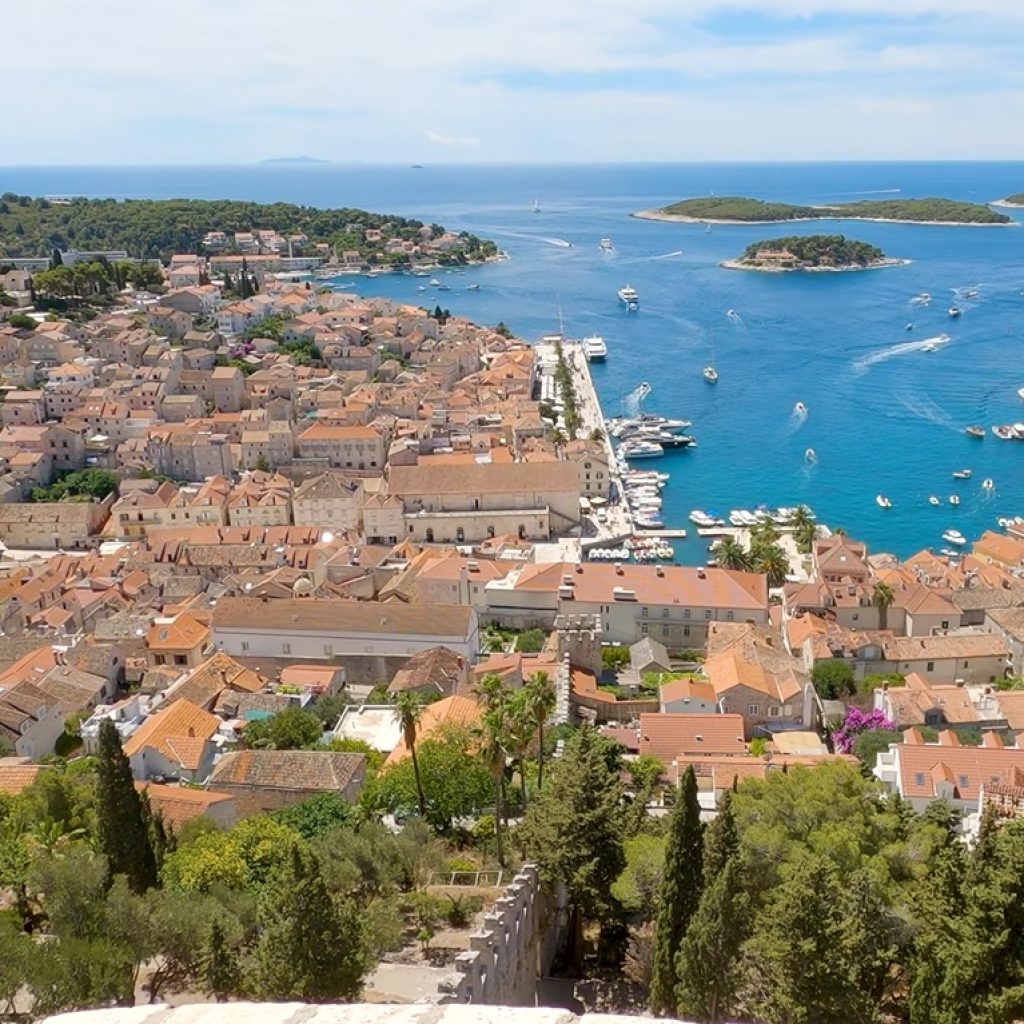
5. Korčula Island: Wine, Culture, and Tradition
Korčula, known as the birthplace of Marco Polo, is a beautiful island filled with vineyards, olive groves, and medieval charm.
Highlights of Korčula:
- Korčula Town: Often called “Little Dubrovnik” because of its fortified walls, this charming town is a maze of narrow streets, perfect for exploring.
- Moreška Sword Dance: A traditional sword dance performed during summer festivals, a unique cultural experience.
- Lumbarda: A village known for its sandy beaches and Grk wine, one of Croatia’s rarest varieties.
Day Trips:
- Mljet National Park: A short ferry ride from Korčula, Mljet is a paradise for nature lovers, with saltwater lakes, cycling trails, and walking paths.
6. Brač Island: Home to Zlatni Rat Beach
Brač, one of the largest Croatian islands, is a treasure trove of natural beauty and historic charm. Famous for Zlatni Rat Beach (Golden Horn Beach), one of the most iconic beaches in the Adriatic, Brač is a must-visit destination for beach lovers and adventure seekers alike.
Top Attractions on Brač Island:
- Zlatni Rat Beach: A stunning, ever-changing pebble beach that juts into the Adriatic Sea. Due to its unique shape, it changes direction based on the wind and sea currents, making it one of the most photographed beaches in Croatia.
- Vidova Gora: The highest peak in the Adriatic islands, offering breathtaking panoramic views of the Dalmatian coast and neighboring islands. Hiking to the top is a rewarding experience.
- Supetar: The main town on Brač, Supetar has a charming harbor, stone streets, and a laid-back vibe. It’s a great place to relax and explore local cafes, restaurants, and beaches.
- Blaca Monastery: A hidden gem on the island, this ancient hermitage was built into a cliff by monks in the 16th century. The monastery houses a fascinating collection of historical artifacts, including rare manuscripts, astronomical equipment, and furniture.
Activities and Day Trips:
- Water Sports: Brač is ideal for windsurfing, sailing, and kayaking, especially around Zlatni Rat Beach.
- Explore Local Villages: Visit quaint villages like Škrip, the oldest settlement on the island, known for its stone houses and local museum dedicated to Brač’s rich history and culture.
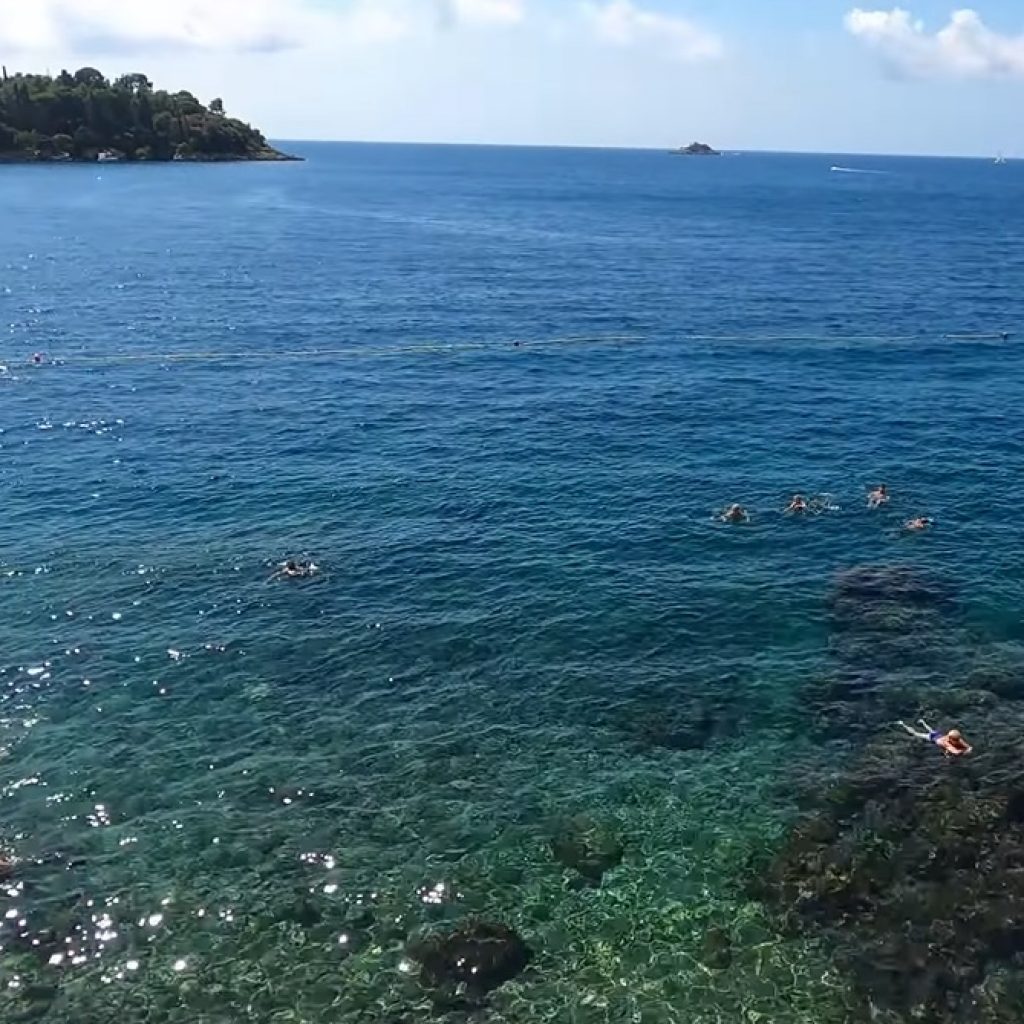
7. Vis Island: Croatia’s Hidden Paradise
Vis Island is one of the most unspoiled and remote islands in Croatia, offering a tranquil escape from the bustling tourist hotspots. Historically, Vis was a military base and closed to tourists until the late 20th century, which has helped preserve its pristine beauty and authentic charm.
Must-See Attractions on Vis Island:
- Blue Cave (Modra Špilja): A natural wonder on the nearby island of Biševo, the Blue Cave is famous for its iridescent blue waters that glow in the sunlight. Boat tours from Vis offer visitors the chance to explore this breathtaking phenomenon.
- Stiniva Beach: A hidden cove surrounded by towering cliffs, Stiniva Beach is accessible by boat or a challenging hike, offering a secluded spot for swimming and relaxation.
- Komiza: A picturesque fishing village on the western side of the island, Komiza is known for its charming stone houses, narrow streets, and beautiful harbor. It’s the perfect place to experience local culture and enjoy fresh seafood.
Exploring the Island:
- Military Tunnels Tour: Vis has a fascinating military history, and one of the unique experiences on the island is exploring its network of underground military tunnels and bunkers. These guided tours provide insight into the island’s strategic importance during World War II and the Cold War.
- Local Wineries: Vis is known for its high-quality wines, particularly the Vugava and Plavac Mali varieties. Visit local wineries for tastings and tours, and enjoy the island’s laid-back lifestyle.
8. Mljet Island: A Nature Lover’s Dream
Mljet is often described as Croatia’s greenest island, thanks to its lush forests, crystal-clear lakes, and unspoiled landscapes. Much of the island is covered by the Mljet National Park, which offers a perfect escape into nature.
What to See and Do on Mljet:
- Mljet National Park: The park covers the western third of the island and is home to two stunning saltwater lakes, Veliko Jezero (Great Lake) and Malo Jezero (Small Lake). Visitors can swim, kayak, or cycle around the lakes, or take a boat to the small island in the middle of Veliko Jezero, which houses a 12th-century Benedictine monastery.
- Odysseus’ Cave: According to legend, the Greek hero Odysseus was stranded on Mljet for seven years, enchanted by the nymph Calypso. The cave named after him is a popular spot for swimming and cliff diving, with turquoise waters and stunning surroundings.
- Saplunara Beach: Located on the eastern side of the island, Saplunara is one of the most beautiful and tranquil beaches in Croatia, with soft sand and shallow waters, perfect for a relaxing day at the beach.
Tips for Visiting Mljet:
- Getting Around: Rent a bike or scooter to explore the island’s scenic roads and hidden coves.
- Day Trips: Mljet is perfect for a day trip from Dubrovnik or Korčula, but it’s also worth staying a few days to fully appreciate its natural beauty.
9. Šibenik: A Medieval Jewel with a Modern Twist
Šibenik is a historic city on the Dalmatian coast, known for its medieval architecture, impressive fortresses, and the iconic Cathedral of St. James, a UNESCO World Heritage site. Unlike many other coastal cities, Šibenik was founded by Croats, giving it a unique cultural identity.
Top Attractions in Šibenik:
- Cathedral of St. James: A stunning Renaissance-style cathedral built entirely from stone, without the use of mortar. It’s a masterpiece of Dalmatian architecture and a must-see for history and architecture lovers.
- St. Michael’s Fortress: Perched high above the town, this fortress offers panoramic views of Šibenik and the surrounding islands. During the summer, the fortress hosts open-air concerts and performances, making it a popular spot for cultural events.
- St. Nicholas Fortress: Located at the entrance to Šibenik Bay, this sea fortress is part of the city’s impressive defensive system and has recently been added to the UNESCO World Heritage list.
Day Trips from Šibenik:
- Krka National Park: A short drive from Šibenik, Krka National Park is famous for its cascading waterfalls and clear emerald pools. Visitors can swim in designated areas and explore walking trails through the lush landscape.
- Kornati Islands: This archipelago of 140 islands is a paradise for sailing and diving. Day tours from Šibenik offer the chance to explore the rugged beauty of this protected area.
10. Trogir: A UNESCO-Listed Town Frozen in Time
Trogir is a small, UNESCO-listed town located just a short drive from Split. Known for its well-preserved medieval architecture and charming old town, Trogir is often called an “open-air museum.” Its narrow streets, historic churches, and lively waterfront make it a must-visit destination on the Dalmatian coast.
What to See in Trogir:
- St. Lawrence Cathedral: The centerpiece of Trogir, this cathedral features a stunning Romanesque portal carved by the famous Croatian sculptor Radovan. Climb to the top of the bell tower for panoramic views of the town and the surrounding islands.
- Kamerlengo Fortress: A 15th-century fortress that once protected Trogir from invaders. Today, it’s a popular venue for concerts and events during the summer.
- Cipiko Palace: A Renaissance palace located opposite St. Lawrence Cathedral, once home to one of Trogir’s most prominent families.
Day Trips and Activities:
- Explore Nearby Islands: Trogir is a great base for exploring nearby islands like Čiovo and Drvenik Veli. Rent a boat or take a day trip to discover secluded beaches and hidden coves.
- Relax on the Waterfront: Trogir’s vibrant waterfront promenade is lined with cafes, restaurants, and bars, making it the perfect spot to enjoy a meal or a drink while watching the boats come and go.
Inland Croatia: Historical Towns, Castles, and National Parks
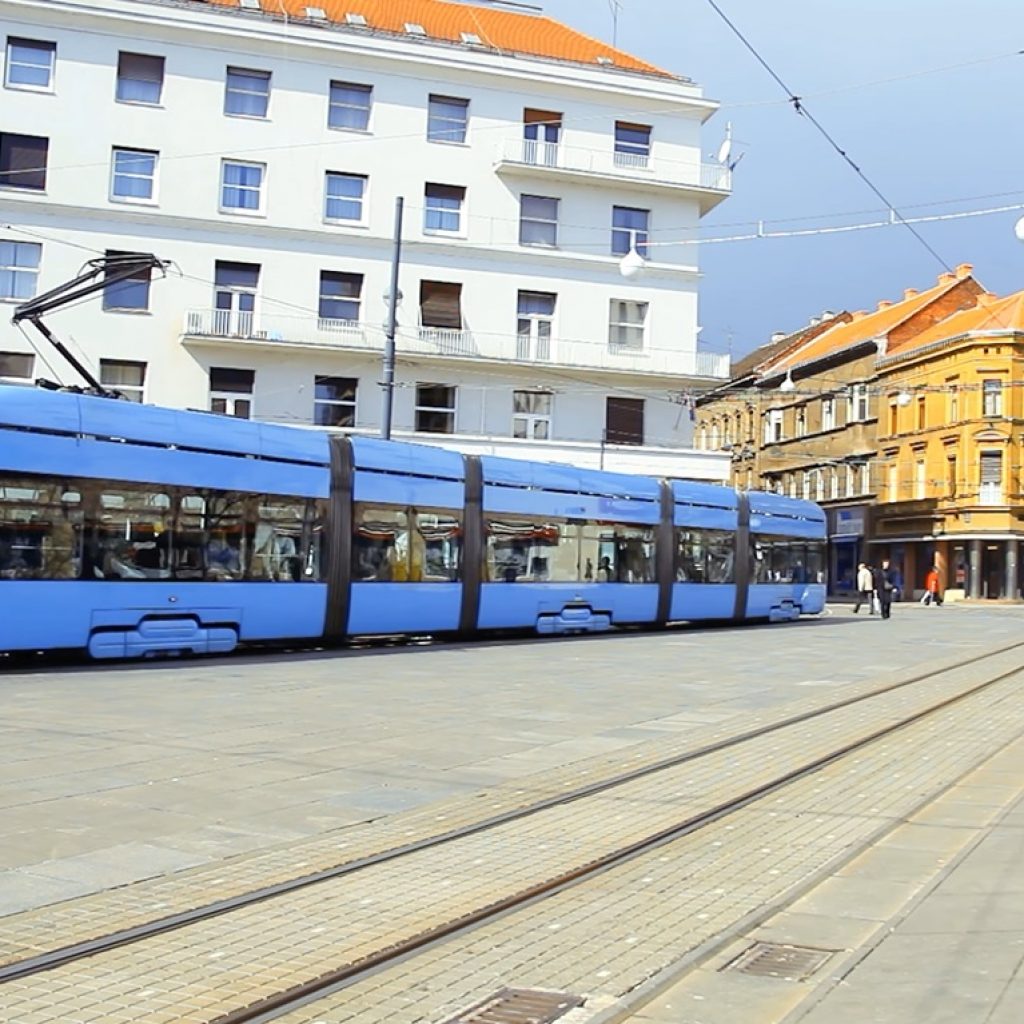
11. Zagreb: Croatia’s Capital and Cultural Hub
Zagreb, the capital of Croatia, is a vibrant city known for its historic architecture, lively street life, and rich cultural scene. The city is divided into Gornji Grad (Upper Town) and Donji Grad (Lower Town), each offering a unique experience for visitors.
Top Attractions in Zagreb:
- St. Mark’s Church: Located in the heart of the Upper Town, this church is one of Zagreb’s most recognizable landmarks, thanks to its colorful tiled roof depicting the coat of arms of Croatia.
- Zagreb Cathedral: The tallest building in Croatia, this Gothic-style cathedral dominates the skyline of the city. Inside, visitors can admire its stunning stained glass windows and intricate stonework.
- Dolac Market: A bustling farmers’ market located just below the cathedral, Dolac is the perfect place to sample local produce, cheeses, and fresh fish.
- Museum of Broken Relationships: One of Zagreb’s quirkiest attractions, this museum features exhibits of objects and stories from failed relationships, offering a unique and sometimes poignant look at love and loss.
Day Trips from Zagreb:
- Plitvice Lakes National Park: A UNESCO World Heritage site, Plitvice Lakes is one of Croatia’s most famous national parks, known for its cascading lakes and waterfalls. It’s easily accessible as a day trip from Zagreb.
- Samobor: A charming town just outside Zagreb, known for its traditional pastry, kremsnita, and beautiful hiking trails in the nearby Samobor Hills.
12. Plitvice Lakes National Park: A UNESCO Natural Wonder
One of Croatia’s most famous attractions, Plitvice Lakes National Park is a stunning natural wonderland of cascading lakes, waterfalls, and lush greenery. It’s one of the oldest and largest national parks in Croatia, and a UNESCO World Heritage site since 1979.
Exploring Plitvice Lakes:
- Upper and Lower Lakes: The park is divided into the Upper Lakes and Lower Lakes, each offering unique landscapes and scenic trails. Wooden walkways allow visitors to explore the lakes and waterfalls up close.
- Veliki Slap (Big Waterfall): The tallest waterfall in the park, standing at over 78 meters, is a highlight of any visit to Plitvice.
- Boat and Train Rides: The park offers electric boat rides across Kozjak Lake, as well as panoramic train rides through the park, providing a different perspective on the stunning scenery.
Tips for Visiting:
- Best Time to Visit: Spring and autumn are ideal times to visit Plitvice, as the park is less crowded and the weather is mild. In the winter, the park transforms into a magical snow-covered landscape.
- Plan for a Full Day: The park is large, so plan to spend a full day exploring its many trails and viewpoints.
13. Rijeka: Croatia’s Bustling Port City
As Croatia’s third-largest city and its main port, Rijeka is often overshadowed by other more touristy destinations. However, this vibrant city offers a rich history, lively cultural scene, and beautiful coastal views. Rijeka was named the European Capital of Culture in 2020, and its industrial past blends seamlessly with its growing cultural appeal.
What to See in Rijeka:
- Trsat Castle: Perched on a hill overlooking the city, Trsat Castle dates back to the 13th century and offers stunning views of Rijeka and the surrounding Kvarner Bay. Visitors can explore the castle’s courtyards, learn about its history, and enjoy refreshments at the on-site café.
- Korzo: Rijeka’s main pedestrian street is the heart of the city, lined with shops, cafes, and historical buildings. It’s the perfect place to take a leisurely stroll, enjoy a coffee, or people-watch.
- St. Vitus Cathedral: This unique Baroque-style rotunda is the only round church in Croatia and is dedicated to Rijeka’s patron saint, St. Vitus. The cathedral’s striking architecture and rich history make it a must-visit landmark.
- Peek & Poke Computer Museum: A quirky museum dedicated to the history of computers and technology, offering a nostalgic trip back in time for visitors of all ages.
Day Trips from Rijeka:
- Opatija: A short drive from Rijeka, the coastal town of Opatija is known for its elegant 19th-century architecture, beautiful seaside promenade, and luxury spas. It was once a popular destination for European royalty and nobility.
- Krk Island: One of Croatia’s largest islands, Krk is easily accessible from Rijeka via a bridge. Explore charming towns like Vrbnik and Baška, or relax on Krk’s pristine beaches.
14. Varaždin: A Baroque Beauty in Northern Croatia
Varaždin, located in northern Croatia, is often referred to as the “Baroque Capital” of the country due to its stunning Baroque architecture. This charming town is known for its well-preserved old town, colorful facades, and lively festivals, making it a perfect destination for history and culture lovers.
Top Attractions in Varaždin:
- Varaždin Castle: This beautiful white castle, located in the heart of the town, is now a museum showcasing a wide range of exhibits, including historical artifacts, art, and furniture. The surrounding park is a peaceful spot for a stroll.
- Old Town Square (Korzo): The vibrant center of Varaždin, Korzo is home to colorful Baroque buildings, cafes, and restaurants. It’s a great place to relax and soak in the town’s unique atmosphere.
- Town Hall: The oldest continuously functioning town hall in Europe, dating back to the 15th century. The building’s facade is an excellent example of Baroque architecture, and it remains the seat of local government today.
- Varaždin Cemetery: Known for its beautifully landscaped grounds and unique layout, Varaždin Cemetery is often compared to a park. It’s a peaceful and serene place to visit, with carefully manicured hedges and historic tombs.
Festivals and Events:
- Špancirfest: Varaždin’s most famous event is this 10-day street festival held every August, featuring music, theater, art, and performances. The town comes alive with a carnival-like atmosphere, drawing visitors from all over Croatia and beyond.
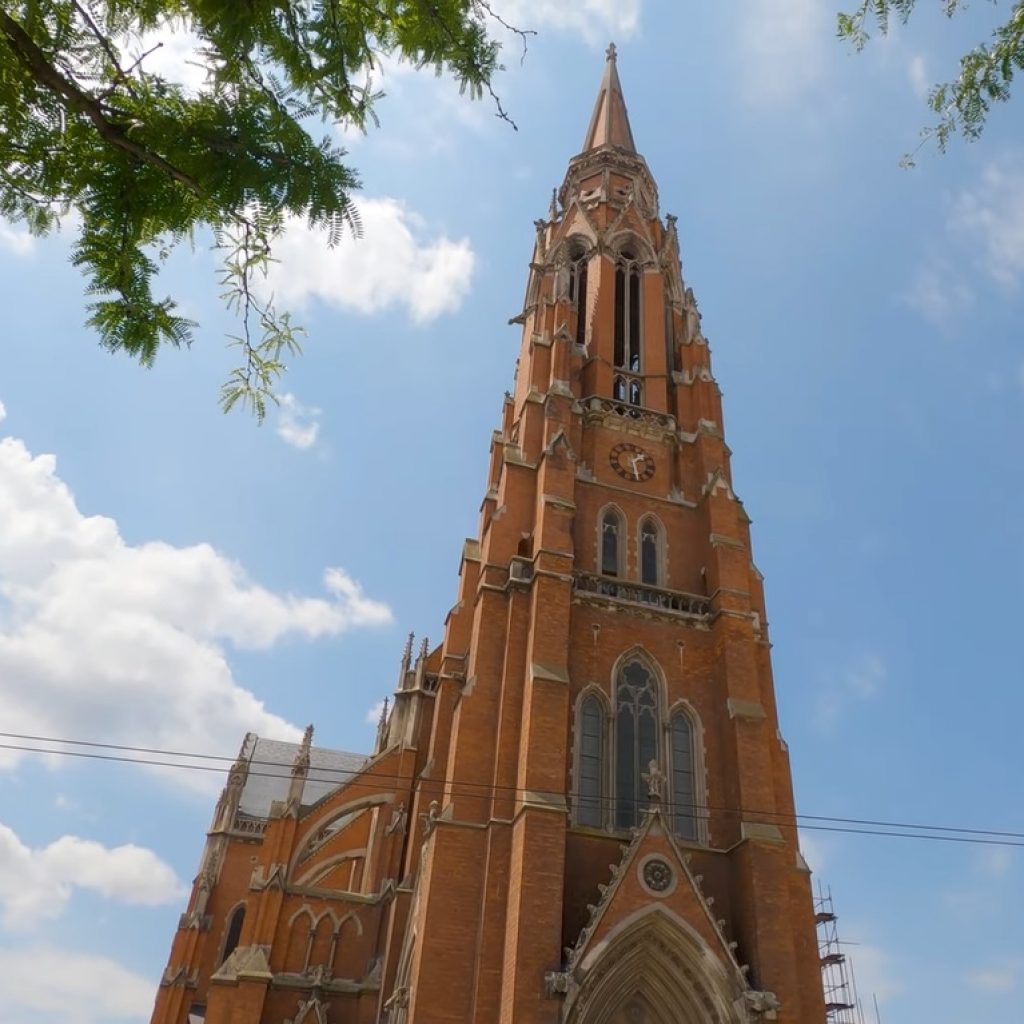
15. Osijek: Croatia’s Cultural Hub in the East
Located in eastern Croatia, Osijek is the largest city in the region of Slavonia. Known for its rich history, stunning parks, and cultural landmarks, Osijek offers a different experience compared to Croatia’s coastal destinations. The city’s Baroque architecture, riverfront promenade, and vibrant local scene make it a hidden gem worth exploring.
What to See in Osijek:
- Tvrđa (Old Fortress): Osijek’s most significant historical site, Tvrđa is a well-preserved Baroque fortress that once protected the city from Ottoman invasions. Today, it’s a lively area filled with cafes, bars, and cultural institutions. Visitors can explore its cobblestone streets and admire the beautifully restored buildings.
- Osijek Cathedral: The Church of St. Peter and Paul is Osijek’s tallest building and a prime example of Neo-Gothic architecture. Its soaring spires dominate the city skyline, and the interior is equally impressive, with intricate stained glass windows and ornate decorations.
- Promenade by the Drava River: One of the most picturesque parts of Osijek, the riverfront promenade is perfect for a leisurely walk or bike ride. Lined with cafes and restaurants, it offers stunning views of the Drava River and the city’s historic buildings.
- Kopački Rit Nature Park: Just outside Osijek, this vast wetland is a paradise for nature lovers and birdwatchers. Kopački Rit is home to a diverse array of wildlife, including deer, wild boar, and hundreds of bird species. Boat tours and walking trails allow visitors to explore the park’s unique ecosystem.
Day Trips and Wine Tasting:
- Wine Roads of Slavonia: Slavonia is known for its high-quality wines, particularly Graševina. Take a day trip to nearby vineyards to sample local wines and traditional Slavonian cuisine.
16. Slavonski Brod: A Riverside Town with a Rich History
Slavonski Brod, located on the banks of the Sava River, is a charming town in the region of Slavonia. Known for its well-preserved Brodski Fortress and its riverside promenade, Slavonski Brod offers a mix of history, culture, and relaxation. It’s also famous for its traditional craftsmanship and folklore.
Things to Do in Slavonski Brod:
- Brodski Fortress: One of the largest fortresses in Croatia, Brodski Fortress was built in the 18th century to defend against the Ottoman Empire. Today, visitors can explore its massive walls, courtyards, and underground passages. The fortress also hosts cultural events and exhibitions throughout the year.
- Sava River Promenade: A scenic walkway along the Sava River, perfect for a relaxing stroll or bike ride. The promenade is lined with cafes, playgrounds, and benches, offering beautiful views of the river and the surrounding landscape.
- Ivana Brlić-Mažuranić Square: Named after one of Croatia’s most beloved children’s authors, this central square is a lively hub of activity, surrounded by colorful buildings, cafes, and shops. The nearby Ivana’s House of Fairy Tales is a must-visit for families.
Explore Local Culture:
- Traditional Crafts: Slavonski Brod is known for its skilled artisans who create traditional crafts, including hand-embroidered textiles, wooden toys, and pottery. Visitors can learn about these crafts and purchase unique souvenirs at local markets.
17. Karlovac: Croatia’s City of Four Rivers
Located just an hour from Zagreb, Karlovac is known as the “City of Four Rivers” because it lies at the confluence of four major rivers: Kupa, Korana, Mrežnica, and Dobra. This riverside city is famous for its star-shaped layout, historic fortifications, and beautiful parks.
What to See in Karlovac:
- Dubovac Castle: Overlooking the city, this medieval castle offers stunning views of Karlovac and the surrounding countryside. Visitors can explore the castle’s tower, which houses a museum, and enjoy panoramic vistas from the top.
- Star-Shaped City: Karlovac’s unique star-shaped design is a remnant of its defensive past. Walk through the old town’s streets to appreciate the city’s historic layout and architecture.
- Korana River Beaches: During the summer months, locals flock to the beaches along the Korana River to swim and sunbathe. Foginovo Beach, in particular, is a popular spot for swimming and picnicking.
- Aquatika Freshwater Aquarium: Located on the banks of the Korana River, this aquarium showcases the rich biodiversity of Croatia’s rivers and lakes. It’s an educational and family-friendly attraction, with interactive exhibits and a wide variety of freshwater species.
Outdoor Adventures:
- Kayaking and Rafting: Karlovac’s rivers are perfect for kayaking, canoeing, and rafting. Adventurous visitors can enjoy water sports on the Kupa and Mrežnica rivers, which offer stunning scenery and crystal-clear waters.
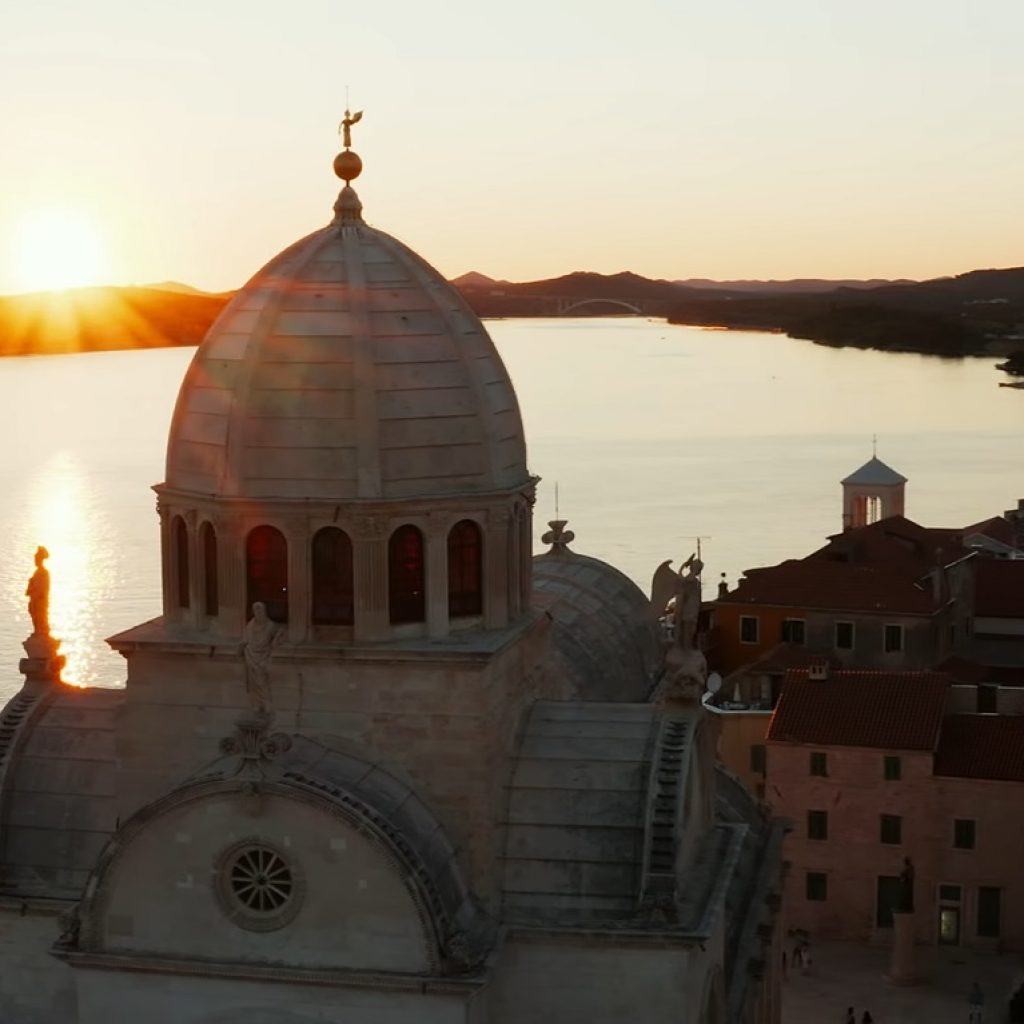
18. Rovinj: A Picture-Perfect Town on the Istrian Peninsula
Rovinj is often considered one of the most beautiful towns in Croatia, and it’s easy to see why. Located on the western coast of the Istrian Peninsula, Rovinj’s charming old town is a maze of narrow cobblestone streets, colorful buildings, and a vibrant waterfront. The town’s Venetian influence is evident in its architecture and culture, making it a unique destination in Croatia.
Cultural Experiences:
- Rector’s Palace: This historic building houses the Cultural History Museum and is a great place to learn about Dubrovnik’s rich past. Its mix of Gothic, Renaissance, and Baroque architecture makes it a visual treat.
- Sponza Palace: Another architectural gem, Sponza Palace features intricate stonework and houses the city archives. It’s a beautiful spot for photography and to appreciate Dubrovnik’s history.
Activities:
- Cable Car Ride: Take the cable car to Mount Srđ for panoramic views of the city and the surrounding Adriatic coast. The sunset from here is particularly stunning.
- Lokrum Island: Just a short boat ride from Dubrovnik, Lokrum Island is a serene escape with botanical gardens, historic ruins, and beautiful swimming spots.
Culinary Delights:
- Local Cuisine: Don’t miss out on trying local dishes such as black risotto, seafood pasta, and fig cake. Dubrovnik has many restaurants offering fresh Mediterranean cuisine.
19. Split: The Heart of Dalmatia
Split, the largest city in Dalmatia, is known for its vibrant atmosphere, rich history, and stunning waterfront. The city is home to the famous Diocletian’s Palace, a UNESCO World Heritage site that forms the heart of the old town.
Top Attractions in Split:
- Diocletian’s Palace: This ancient Roman palace is a must-visit, with its impressive architecture and bustling squares. Explore the underground cellars, visit the Peristyle, and admire the Cathedral of St. Domnius, which is built within the palace walls.
- Riva Promenade: The lively waterfront promenade is perfect for a leisurely stroll. Enjoy the vibrant atmosphere, grab a coffee, or dine at one of the many restaurants overlooking the harbor.
- Marjan Hill: For those seeking nature, Marjan Hill offers hiking and biking trails with breathtaking views of the city and the sea. It’s an excellent spot for a picnic or sunset watching.
Cultural Events:
- Split Summer Festival: This annual festival features theater, music, and dance performances in various historical venues throughout the city, providing a taste of local culture.
20. Pula: A Roman Legacy
Pula, located at the southern tip of the Istrian Peninsula, is famous for its well-preserved Roman architecture, including one of the best-preserved amphitheaters in the world.
Must-See Sights in Pula:
- Pula Arena: This Roman amphitheater dates back to the 1st century AD and is a remarkable sight. It’s still used for events and concerts today, making it a vibrant part of the city.
- Temple of Augustus: A beautiful example of Roman architecture, this temple is dedicated to the first Roman emperor. It showcases Pula’s rich historical significance.
- Arch of the Sergii: This ancient archway, built in the 1st century BC, is a symbol of Pula’s Roman heritage and a popular photo spot.
Local Experiences:
- Pula’s Beaches: The city has several nearby beaches, such as Punta Verudela, perfect for swimming and sunbathing. The crystal-clear waters are ideal for water sports.
21. Rijeka: A Cultural Hub
Rijeka, Croatia’s third-largest city, is known for its vibrant cultural scene and historic architecture. The city is a port and has a rich maritime history.
Things to Do in Rijeka:
- Trsat Castle: Perched on a hill overlooking the city, this medieval castle offers stunning views of Rijeka and the Kvarner Bay. Explore its grounds and enjoy a meal at the café on-site.
- Korzo: Rijeka’s main promenade is lively and filled with shops, cafes, and cultural events. It’s a great place to soak in the local atmosphere.
- The Maritime and History Museum: Discover Rijeka’s maritime heritage and the city’s historical significance through various exhibits.
Cultural Events:
- Rijeka Carnival: One of the largest carnivals in Europe, Rijeka Carnival features colorful parades, music, and performances, attracting visitors from around the world.

22. Osijek: A Historical Town
Osijek, located in eastern Croatia, is known for its Baroque architecture and lush parks. It’s a charming town with a rich cultural heritage.
Must-See Attractions in Osijek:
- Tvrđa (Fortress): This 18th-century fortress is a highlight of Osijek, featuring beautiful Baroque buildings and picturesque streets. It’s a great place to explore history and enjoy local cafes.
- Cathedral of St. Peter and Paul: An impressive Gothic cathedral, it is one of the tallest buildings in Croatia. Visitors can climb the tower for panoramic views of the city.
- Kopački Rit Nature Park: Located nearby, this wetland area is a haven for birdwatchers and nature lovers. It offers beautiful landscapes and diverse wildlife.
23. Zagreb: The Capital City
Zagreb, Croatia’s capital, is a vibrant city blending history, culture, and modernity. It offers a rich array of museums, galleries, and lively street life.
Top Attractions in Zagreb:
- Ban Jelačić Square: The central square is the heart of the city, surrounded by shops, cafes, and historical buildings. It’s a great starting point for exploring Zagreb.
- Upper Town (Gornji Grad): This historic area features cobblestone streets, medieval buildings, and landmarks like St. Mark’s Church and the Museum of Broken Relationships.
- Zagreb Cathedral: A stunning example of Gothic architecture, the cathedral is an iconic symbol of the city and is worth a visit for its beautiful interior and impressive towers.
Cultural Experiences:
- Zagreb’s Museums: The city boasts numerous museums, including the Croatian Museum of Naive Art and the Museum of Contemporary Art, showcasing diverse artistic expressions.
Why Book with Europe Travel Bureau?
At Europe Travel Bureau, we offer tailored travel experiences designed to showcase the best of Croatia. Whether you’re looking for a luxurious getaway, a cultural immersion, or an action-packed adventure, our curated tours provide a seamless and personalized travel experience. We take care of all the details, from accommodation to guided tours, ensuring you enjoy a stress-free vacation. Let us help you plan your perfect Croatian getaway today!
Ready to Explore Croatia?
Explore the rich heritage, stunning landscapes, and vibrant cities of Croatia with Europe Travel Bureau. Visit Europe Travel Bureau and book your next Croatian adventure today!





Comment (0)